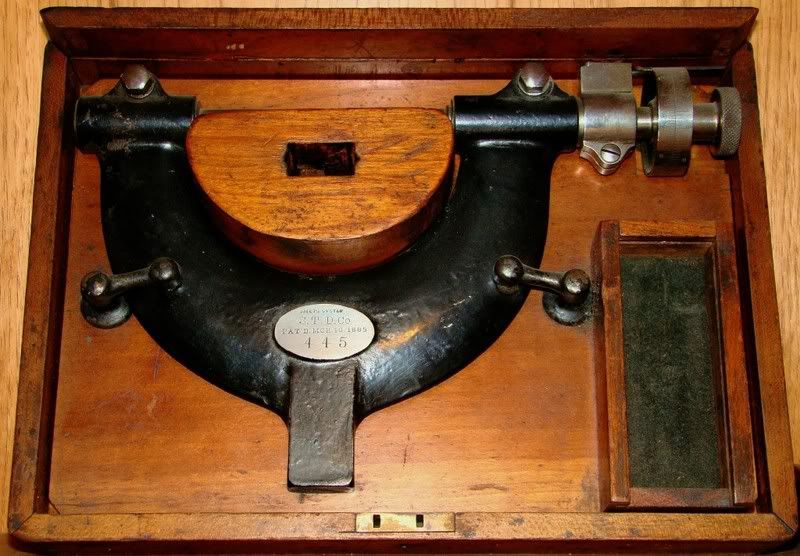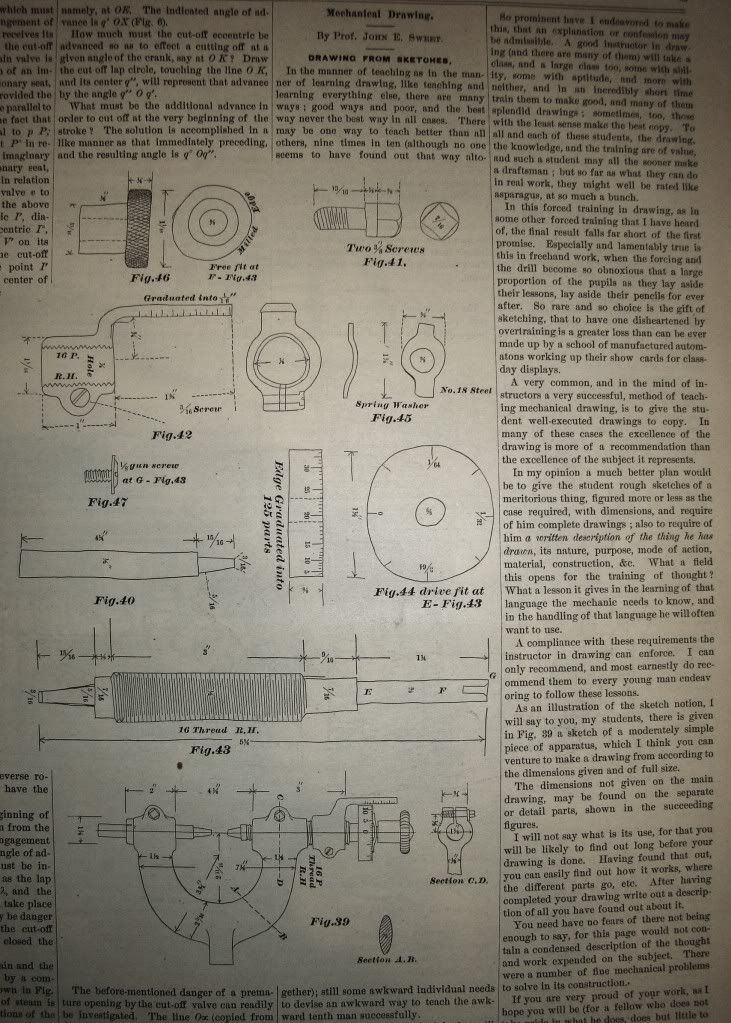AntiqueMac
Hot Rolled
- Joined
- Jun 17, 2003
- Location
- Florida Mountains!
I hope this is of interest to some on this forum.
Looking through my 1882 years worth of American Machinist, I ran across an article that surprised me.
I thought it was common wisdom for a patentee to not publish his invention before it was patented.
But, there it was, right smack in the middle of page 3, in the February 11, 1882 issue of American Machinist. Under the heading Mechanical Drawing and the title 'Drawing from Sketches' was a large article by Professor John E Sweet.
He is probably most famous to collectors of precision tools as the inventor of the Sweet's Patent Comparator - a micrometer. See a picture of one below.
His comparator was patented on March 10, 1885 - nearly 3 years after the article was published. But approximately 1/2 of this earlier page is a drawing of his invention. See the drawing below.
As titled, the article discusses/instructs making a drawing and he used something he was going to patent to be the students example.
Here is a picture of a Sweets Patent Comparator, complete with partial original box and missing two standards:

And, here is a picture of the article from the Feb. 11, 1882 American Machinist:

In the article, Prof Sweet seems unafraid of a patent jumper. He writes:
So, he is challenging them to draw the comparator in full size and ready for construction. But, he goes on to say:
It surprises me he would publish before protected his intellectual work. I can't image any inventor today being so free with intellectual property. But, I have to add a sample of Prof Sweet's confidence in keeping the Comparators development to himself - addressing his students, he wrote a note saying essentially that they could draw it, understand it, but not construct it because:
I guess within 3 years, John Sweet had the solved. But, are there many other examples of a patented item being published before being patented?

Looking through my 1882 years worth of American Machinist, I ran across an article that surprised me.
I thought it was common wisdom for a patentee to not publish his invention before it was patented.
But, there it was, right smack in the middle of page 3, in the February 11, 1882 issue of American Machinist. Under the heading Mechanical Drawing and the title 'Drawing from Sketches' was a large article by Professor John E Sweet.
He is probably most famous to collectors of precision tools as the inventor of the Sweet's Patent Comparator - a micrometer. See a picture of one below.
His comparator was patented on March 10, 1885 - nearly 3 years after the article was published. But approximately 1/2 of this earlier page is a drawing of his invention. See the drawing below.
As titled, the article discusses/instructs making a drawing and he used something he was going to patent to be the students example.

Here is a picture of a Sweets Patent Comparator, complete with partial original box and missing two standards:

And, here is a picture of the article from the Feb. 11, 1882 American Machinist:

In the article, Prof Sweet seems unafraid of a patent jumper. He writes:
"As an illustration.......there is given in Fig 39 a sketch of a moderately simple piece of apparatus which I venture you can make a drawing from given the dimensions given and of full size."
So, he is challenging them to draw the comparator in full size and ready for construction. But, he goes on to say:
"I will not say what is its use, for that you will be likely to find out long before your drawing is done. Having found that out, you can easily find out how it works, where the different parts go, etc."
It surprises me he would publish before protected his intellectual work. I can't image any inventor today being so free with intellectual property. But, I have to add a sample of Prof Sweet's confidence in keeping the Comparators development to himself - addressing his students, he wrote a note saying essentially that they could draw it, understand it, but not construct it because:
"There were a number of mechanical problems to solve in its construction."
I guess within 3 years, John Sweet had the solved. But, are there many other examples of a patented item being published before being patented?



